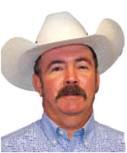Fertilizing and Mowing Your Turfgrass Most of our turfgrasses are trying to green-up, but a lot of what you are seeing is various winter grasses. We will need some warmer nights to really get the turfgrasses going. It seems like we have had cooler nights and days in April than we did in March. While the cool nights are slowing growth most are starting to green up, so it is time to plan your first fertilizer application.
A good rule of thumb is to apply approximately 1 lb. of actual nitrogen per 1,000 square feet.
Ideally, the amount of phosphorus (P) and potassium (K) applied along with the nitrogen should be determined by soil test results (fertilizer ratio). Many of our soils in Texas are high to very high in phosphorus and potassium and in these cases all you need to apply is straight nitrogen.
If a soil test has not been conducted, then a 4-1-2 to 3-1-2 fertilizer ratio would be recommended.
Not all soils are high in phosphorus and potassium and if you are applying only nitrogen, and your soil is deficient in P and K then the turfgrass will become stressed.
In heavily shaded areas, only apply 0.5 lbs. of total nitrogen per 1,000 square feet. Excess nitrogen in shade will eventually cause major problems for the turfgrass growing in these areas.
Depending on the type of turfgrass, soil type, environmental conditions (sun vs. shade) and level of maintenance desired, make a second application 5 to 6 weeks after the spring application.
If you are not sure of your lawn’s measurements, take a few minutes to walk it off and figure up your square footage. This will help prevent the over or under application of fertilizer and other lawn care products.
Setting your mower to the right height and mowing timings can make a big difference in the thickness and health of your lawn. Mowing the lawn at a lower height and more frequently will force the turfgrass to spread faster and form a denser stand of turfgrass.
The key is to mow the turfgrass often enough so that you never remove more than 30% to 40% of the leaf blade when the grass is mowed. Removal of excess leaf tissue inhibits the plants’ ability to continue photosynthesis properly, which means that the plant cannot produce enough food for new growth, especially new leaf growth.
Mowing frequency is going to be determined by the height of cut and growth rate. The lower the grass is mowed, the more frequently it needs to be mowed. The more the grass is fertilized and watered, the more often it will need to be mowed. Mowing at the proper height and frequency will produce a denser stand of turfgrass, a deeper root system, and more stored carbohydrates in the plant. However, frequency will vary during the year due to day length differences and changes in temperature.
In the fall and spring, when we have longer nights and cooler nighttime temperatures, the warm season grasses are not going to be growing as fast as they will in late spring through early fall months. Listed below are the recommended mowing heights and frequency for turfgrasses growing in home lawns.

